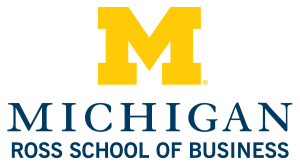The Iowa Speedway was constructed in 2006 by the U.S. Motorsport Entertainment Corporation. The state of the art racetrack is home to many prominent racing leagues, such as NASCAR’s Nationwide Series. This mini-case is an exercise on accounting for depreciable life. Students are asked to imagine that they have to close the books on 2006, the first year of operation. The financial auditors need a written memo on the depreciable life of the speedway and a specific rationale for it. Key lessons learned are the difference between physical and economic life, reasonable professional judgment, and GAAP vs. tax life. Iowa Speedway (A) provides the context for the class discussion. Iowa Speedway (B) provides additional information for students to be able to analyze the problem.
Iowa Speedway: Determining Depreciable Life (B)
by: David Wright
Publication Date: October 20, 2009
Length: 4 pages
Product ID#: 1-428-913
Core Disciplines: Accounting/Finance
Available Documents
Click on any button below to view the available document.
Don't see the document you need?
Don't See the Document You Need?
Make sure you are registered and/or logged in to our site to view product documents. Once registered & approved, faculty, staff, & course aggregators will have access to full inspection copies and teaching notes for any of our materials.
Make sure you are registered and/or logged in to our site to view product documents. Once registered & approved, faculty, staff, & course aggregators will have access to full inspection copies and teaching notes for any of our materials.
$1.95
Need to make copies?
If you need to make copies, you MUST purchase the corresponding number of permissions, and you must own a single copy of the product.
Electronic Downloads are available immediately after purchase. "Quantity" reflects the number of copies you intend to use. Unauthorized distribution of these files is prohibited pursuant to term of use of this website.
Teaching Note
This product does not have a teaching note.
Description
Teaching Objectives
After reading and discussing the material, students should:
- describe appropriate business terms and principles approriate to this case,
- apply critical concepts from earlier learning to define a solution to the case,
- successfully articulate data and information in support of the solution proposed,
- critically analyze and discuss other responses and solutions to the case,
- draw lessons from the case analysis,
- generalize the learnings of this case to other business challenges and decisions in organizations other than the one analyzed in this case study,
- demonstrate leadership and scholarship in analysis.

